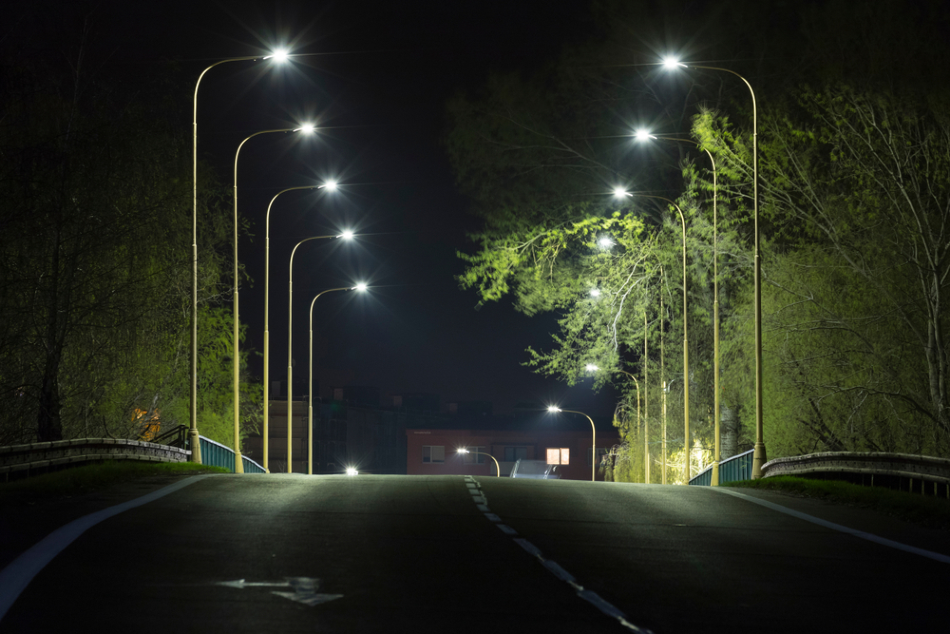
Image Credit: milan noga/Shutterstock.com
Light-emitting diodes (LEDs) have been applied in general and many other lighting settings for decades due to their superior energy efficiency, longer lifetime and relatively small bulk compared to traditional lamps.
Recent research has shown how the efficiency and lifetime of LEDs can be dramatically improved without sacrificing bulk by inserting a single layer of nanoparticles between the LED chip and glass or plastic encasing.
Why do LEDs Lose Light?
The research, published in Light: Science and Applications by an international team from Imperial College London, UK, and the Indian Institute of Technology (IIT) Guwahati in 2020, theoretically demonstrates how LEDs can transmit more light for the same amount of energy input by introducing nanoparticles to the device.
The researchers explored how introducing a two-dimensional layer of plasmonic nanoparticles in a meta-grid structure between the semiconductor chip inside an already existing LED and its glass or plastic encasing can work to reduce the loss of light caused by reflections from inside the casing.
This reduction in transmitted light is referred to as Fresnel loss, Fresnel reflection loss, or simply reflection loss. It occurs when light passes through two substances with different refractive indices, as is the case when light leaves the end face of a fiber optic cable or enters the air outside an LED. When it happens, a fraction of the emitted light is reflected back to the light source.
How Is Fresnel Loss Combatted?
To combat the effect of Fresnel loss, the research team made use of the phenomenon of destructive wave interference – a fundamental theory of optical and radiation physics.
Wave interference describes how two waves from the same type of source (light, sound, and so on) produce the third wave when they meet. When this happens, the new wave will have an amplitude that is greater, less or equal to the amplitudes of either original wave.
Constructive interference occurs when the crest of one wave meets the crest of another. Destructive interference, on the other hand, occurs when the crest of one wave meets the trough of another wave. Crucially, harmful interference results in a new wave with an amplitude equal to the difference in the magnitudes of the two original waves.
Applying Fundamental Physics
As well as the fundamental physics described above, the international team also built upon research into nanoparticle arrays at interfaces, switchable mirror-windows, tuneable-color mirrors and optical filters.
All of this was combined to theorize a technique for using a two-dimensional nanoparticle layer to reduce Fresnel loss through manipulation of destructive interference. Consider an extremely minute system of mirrors and filters inside the LED, which works to increase the amplitude of light and therefore ensure more light escapes the LED encasing.
LED devices typically transmit light at a rate of around 84% of the light emitted by the diode. However, this research boosts this up to approximately 99% – representing a significant boost in efficiency and resulting in high energy savings.
The introduction of nanoparticles to LEDs does not only increase the amount of light they emit for the same amount of energy, but can also help to increase the lifetime of LED lamps. This is because less light reflecting towards the light source means that the LED is heated less throughout its use.

 What nanoparticle characterization systems are available on the market today?
What nanoparticle characterization systems are available on the market today?
Why is this Research Important?
LED lighting is utilized in a wide variety of applications around the world today, including:
- Car headlights
- Street lighting and traffic signals
- Aviation lighting
- Medical devices
- Lighting for machine vision
- Camera flashes
- Horticultural or hydroponic lighting
- General lighting for homes and workspaces
Use has been increasing rapidly in recent years, as the less energy-efficient, shorter living, and bulkier halogens, CFLs and incandescent bulbs are being phased out (sometimes even through legislation).
The potential to increase efficiency by 15 percentage points – as well as gains in lamp lifetime – will represent even more significant energy savings worldwide.
Next Steps: Can We Manufacture LEDs with Nanoparticles Now?
Study co-author, Dr Debabrate Sikdar or IIT Guwahati, believes their research could be applied almost immediately. Sikdar commented:
"While improvements to the casing have been suggested previously, most make the LED more difficult to manufacture, diminishing the economic effect of the improvement.
"We think that our innovation, based on fundamental theory and the detailed, balanced optimization analysis we performed, could be introduced into existing manufacturing processes with little disruption.”
Sir John Pendry, another co-author, agrees:
"The simplicity of the proposed scheme and the clear physics underpinning it should make it robust and, hopefully, easily adaptable to the existing LED manufacturing process.”
The next step for this research is the manufacture of a working prototype. This can then be fine-tuned in terms of nanoparticle material, spacing and distance from the chip to maximize results.
References and Further Reading
Dunning, Hayley. (2020). “Layer of Nanoparticles Could Improve LED Performance and Lifetime.” Nanowerk. https://www.nanowerk.com/nanotechnology-news2/newsid=55857.php.
Pilkington, Ben. (2019). “Are LED Light Bulbs the Best Way to Save Energy?” AZO Optics. https://www.azooptics.com/Article.aspx?ArticleID=1581.
Pilkington, Ben. (2019). “Comparing Energy-Efficient Light Bulbs: LED, CFL and Halogens.” AZO Optics. https://www.azooptics.com/Article.aspx?ArticleID=1582.
Pilkington, Ben. (2019). “The Degradation of LEDs vs. Lamps.” AZO Optics. https://www.azooptics.com/Article.aspx?ArticleID=1583.
Sikdar, Debabrata, John B. Pendry, and Alexei A. Kornyshev. (2020). “Nanoparticle Meta-Grid for Enhanced Light Extraction from Light-Emitting Devices.” Light: Science & Applications. https://doi.org/10.1038/s41377-020-00357-w.
Steel, W.H. (1986). Interferometry. Cambridge University Press. ISBN 0521311624.
Weik, Martin H. (2000). “Fresnel Reflection Loss.” Computer Science and Communications Dictionary. https://doi.org/10.1007/1-4020-0613-6_7725.
Disclaimer: The views expressed here are those of the author expressed in their private capacity and do not necessarily represent the views of AZoM.com Limited T/A AZoNetwork the owner and operator of this website. This disclaimer forms part of the Terms and conditions of use of this website.